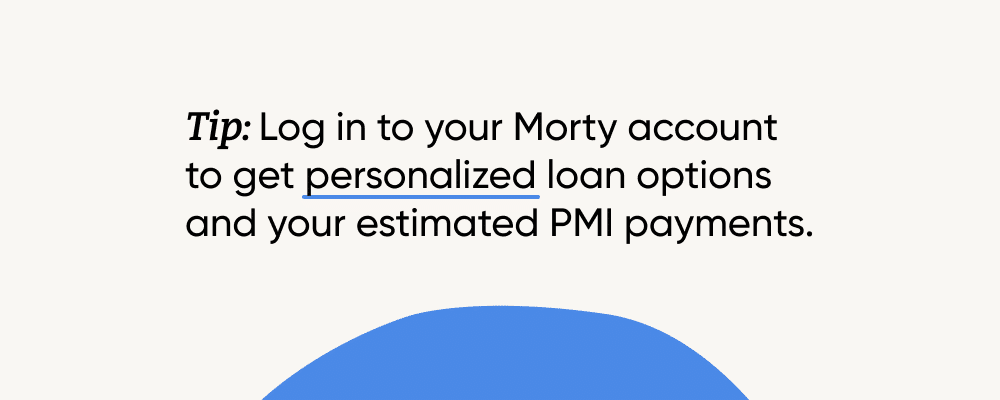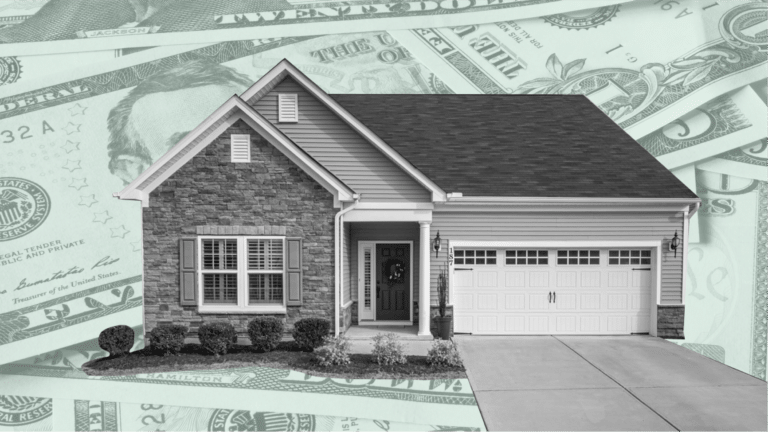Coming up with a down payment for a home can make even the most avid saver quake in their boots — it’s a big chunk of change.
And if you plunk down less than a 20% down payment, you’ll make extra payments in the form of private mortgage insurance (PMI).
So, what is PMI, how much does it cost, and how do you make payments? We’ll touch on all of those answers and even discuss ways you can avoid PMI.
Read on to learn about all things PMI (and if your head is spinning from all the mortgage acronyms – we’ve got a homebuyer’s guide to decoding mortgage acronyms to help there, too!).
What is PMI?
In short, PMI is a type of insurance that protects your lender if you default on your loan. Your lender will probably have you make PMI payments if you can’t come up with a down payment greater than or equal to 20% of the loan amount.
For example, let’s say you borrow $150,000 to buy a home. You’ll need to come up with a $30,000 down payment to avoid PMI.
PMI only applies to conventional loans, or loans not backed by the U.S. government. You may have heard of other types of mortgage insurance such as the mortgage insurance premium (MIP) for FHA loans – but MIP is not the same as PMI.
Lenders typically allow you to request that PMI be canceled at 80% principal loan balance – the point at which your home has reached 20% equity. If you don’t request a cancellation, your lender is required by law to remove it when your principal loan balance reaches 78% of the original value of your home.
But there are also other types of PMI that don’t allow you to discontinue payments quite so easily. We’ll take a closer look at those types below.
How Much Does PMI Cost?
The amount you’ll pay for PMI depends on your loan type.
PMI only applies to conventional loans. When you get a conventional loan, you can choose between mortgage types, including an adjustable-rate mortgage (ARM) and a fixed-rate mortgage.
With an ARM, you may pay more for PMI because the interest rate can go up or down based on market conditions, making it riskier. The interest rate for fixed-rate mortgages, on the other hand, stays the same.
You will find information about your PMI payments as part of your Loan Estimate and Closing Disclosure, two documents that disclose all the details about your mortgage loan.

Different Types of PMI
Under the PMI umbrella, you can find four different types of PMI. Take a look at each type:
- Borrower-paid mortgage insurance (BPMI): The most common type of PMI, BPMI occurs when you – the borrower – pay for mortgage insurance.
- Lender-paid mortgage insurance (LPMI): Your lender may also pay PMI for you in a lump sum when you close on your loan. In return for LPMI, you accept a higher interest rate on your mortgage loan. However, it’s important to remember that if you accept LPMI, you can’t get rid of it. The only way you can change it involves refinancing your mortgage.
- Single-premium mortgage insurance (SPMI): SPMI allows you to pay your mortgage insurance in one lump sum, eliminating the monthly payment requirement. But keep in mind that it’s nonrefundable – if you sell your home after just a few years, you can’t get that money back.
- Split-premium mortgage insurance: Split-premium mortgage insurance takes a hybrid approach to BPMI and SPMI. You can choose to pay part of your PMI in a lump sum and also make payments as well. You may be able to get a refund if your mortgage insurance is canceled.
How Do I Make PMI Payments?
Your lender may offer you several options to pay for PMI. The most common way to pay for PMI involves rolling the payments into your monthly mortgage payment. Your PMI payments are usually held in an escrow account, a third-party account which holds funds temporarily until due. Your loan servicer, which services the loan after you receive it from your lender, ensures that your PMI payments will go to the appropriate creditor on time.
You can make a lump sum payment each year. You also have the option to make a single payment through single-premium mortgage insurance or choose to make a partial upfront payment through split-premium mortgage insurance.
How to Avoid PMI
The simplest way to avoid PMI is to have a down payment of at least 20%.
However, when that’s not possible, remember that you can request that your lender cancel PMI when you reach 20% equity in your home. Many homeowners achieve this by making extra payments or making home improvements that increase their home’s value, for example. Other requirements set by your lender could include:
- Obtaining a new appraisal.
- Making your mortgage payments on time.
- Writing a letter to your lender stating that you’d like PMI removed.
Learn More About PMI
When buying a home, you may quickly realize that making a down payment of 20% might not be the best fit for your needs.
You will be required to get PMI in that case, but it will expire after you hit 78% of your loan to value ratio (LTV). LTV can be calculated by finding the difference between the loan amount and the current market value of your home.
The bottom line is that PMI will ultimately increase the cost of your loan. It doesn’t protect you, either — it protects your lender from the risk it undertakes when loaning to you.
But there are different types of PMI for a variety of situations, so be sure to do your research before choosing the right for you. Make Morty your go-to for guidance on making PMI payments and how to avoid PMI altogether. We’ll help you every step of the way.







